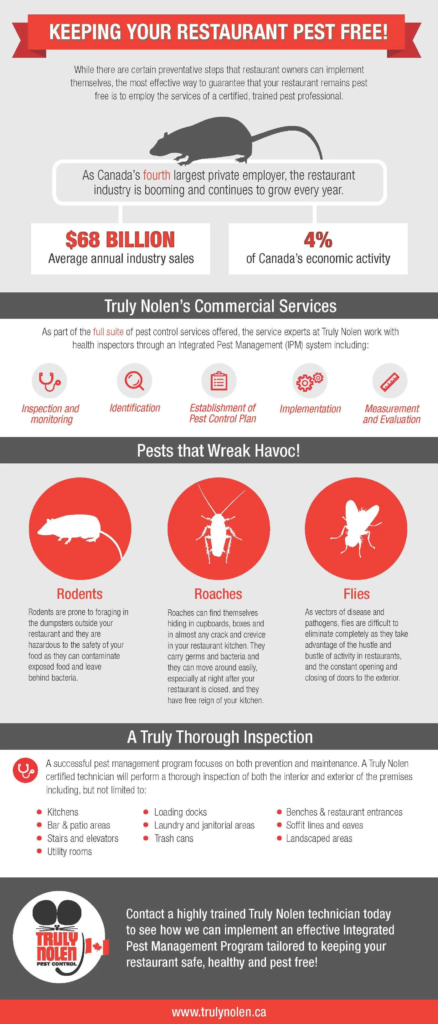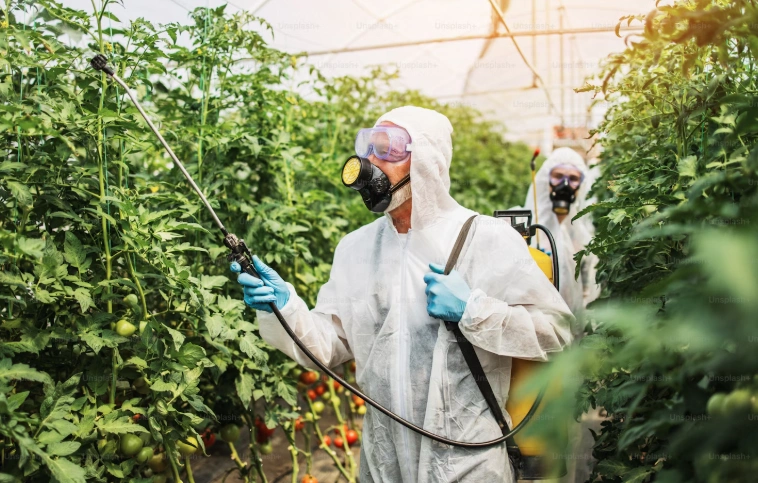Are pests causing you headaches? You’re not alone. Even if you haven’t faced a pest problem yet, it’s wise to be proactive with pest control. Prevention is always better and cheaper than dealing with an infestation.
These tiny invaders can lead to big problems, from damaging property to spreading diseases. Whether you’re in charge of a restaurant, a farm, or a warehouse, pests can quickly become a major concern, affecting your operations and reputation.
In healthcare settings, the presence of pests can be particularly damaging, potentially disrupting services and undermining patient trust.
But fear not! With this guide, you will upgrade your pest risk control plan, 10x your defense strategies, and deploy effective solutions tailored to your industry.
Definition of pest control and purpose
Pest control refers to the management or regulation of species classified as pests—organisms that negatively impact human activities, health, property, or the environment. These can include insects, rodents, weeds, or microorganisms. Regular pest and termite control inspections can greatly reduce risks associated with these threats. Today, pest control methods range from physical removal and chemical treatments to biological and technological solutions.
Overall, the primary goal is to minimize pest-related risks while maintaining health, safety, and operational efficiency. Whether it’s preventing contamination in food production or avoiding structural damage in warehouses, pest control is a critical part of running a sustainable business.
The significance of pest control across industries
Pest can cause damage to your business no matter its sector. Many industries rely on pest management to ensure safe operations, meet compliance standards, and protect their bottom line. Depending on your business, here’s how pest control may play a crucial role across various sectors:
- Food and beverage industry: Pests like rodents or cockroaches can contaminate products, violate health codes, and even lead to shutdowns. Pest control ensures safe, high-quality goods for customers.
- Healthcare facilities: In hospitals or clinics, pests can compromise hygiene, spread disease, and put patients at risk. Pest control maintains sterile environments critical to patient care.
- Hospitality sector: Hotels and restaurants rely on positive guest experiences. A single pest sighting can lead to lost bookings and poor reviews. Proactive pest management keeps guests coming back.
- Agriculture: Pests destroy crops and affect yields. Integrated pest management (IPM) helps farmers protect harvests, ensuring food security and economic stability.
- Warehousing and logistics: Infestations can damage stored goods and disrupt supply chains. Regular inspections and preventive measures protect inventory and minimize losses.
Who needs pest control?
We’ve already established the value of implementing proactive pest control mechanisms no matter your sector. Below are key groups and sectors that depend on effective pest management to maintain safety, efficiency, and success:
Business owners and managers, restaurants, and food service
Pests directly threaten health and safety standards for food service businesses, risking hefty fines or even business closure. Your customers expect clean, safe dining environments, and any sighting of pests can ruin their trust. Preventive measures like sealing entry points, regular inspections, and sanitation protocols can help maintain pest-free environments.
Ultimately, developing and enforcing a standard health and safety policy for your organization makes a very big difference and upscales how your staff and customers see your brand. Also, ongoing maintenance ensures early detection of potential risks.
For instance, running comprehensive bed bug and pest detection inspections can protect your reputation and bottom line in this customer-facing industry. By proactively managing pest control, restaurant owners and managers can ensure food safety, improve customer satisfaction, and build long-term trust.

Hospitality industry, retail, and warehousing
Pest control is also essential in hospitality, retail, and warehousing to preserve guest health, protect inventory, and maintain operational efficiency. Your hotels and resorts would benefit from integrated pest management (IPM) strategies which will minimize pest disruptions while ensuring high standards. In warehouses, pest management systems and processes safeguard products from infestation and contamination. Large-scale solutions tailored to these sectors keep operations seamless, customer experiences positive, and supply chains intact.
Agricultural sector: Crop farmers, livestock producers
In agriculture, pests can devastate your crops, harm your livestock, and disrupt your food supply chains. Sustainable pest control practices, such as crop rotation and biological pest management, reduce their environmental impact while preserving your yields. Again, putting your pest control measures to work improves crop quality and prevents diseases in livestock, reducing financial losses for you and other farmers. Agricultural professionals can protect their investments and contribute to food security by integrating pest management into farming operations.
Best practices for career success as a pest control expert
For professionals like pest control specialists and facility or property managers, understanding the key aspects of pest management is critical to ensuring long-term success. Here’s a guide to the skills, tools, and best practices that drive effective pest control:
- Required skills and certifications: Expertise in pest biology, regulations, and control techniques.
- Opportunities for specialization: Focus areas include IPM, fumigation, or green pest control.
- Technological innovations: Use of sensors, drones, and digital monitoring systems.
- Latest tools and techniques: Safe and effective chemical and non-chemical methods.
- Environmental and safety considerations: Eco-friendly solutions for pest management.
- Routine inspections and maintenance protocols: Early detection to minimize infestations.
- Selecting and managing vendors: Ensuring reliable and compliant service providers.
Public health and environmental officials, community health
Pest control is integral to preventing the spread of diseases like malaria, dengue, and typhoid. Public health officials work to educate communities on safe practices, raising awareness about the dangers of infestations and the importance of hygiene. Educational initiatives and public health campaigns emphasize preventive strategies, reducing health risks while preserving environmental safety and balance. By addressing pest-related challenges, these officials contribute to healthier, safer communities.
Steps to building a formidable pest control strategy (example guide)
Effective pest control requires a strategic, step-by-step approach tailored to the specific challenges of your environment. Whether you’re managing a farm, business, or facility, having a clear plan ensures pests are managed efficiently without compromising safety or sustainability. Below, we’ll walk you through a step-by-step pest control strategy for a farming scenario and explore the core methods and principles that enhance pest management.
Step-by-step pest control strategy for a farm
Let’s consider a crop farm facing recurring pest issues affecting yield and quality.
- Assess the problem: Begin with a detailed inspection of your farm to identify pest types, infestation levels, and affected areas. Use traps, visual checks, and environmental data to gather insights.
- Set action thresholds: Determine the level of pest activity that requires intervention. For example, a few pests might be manageable, but once they threaten crop yields, action is essential.
- Choose control methods: Combine chemical and non-chemical methods for effective results:
- Non-chemical methods: Use crop rotation, introduce natural predators like ladybugs, and maintain healthy soil to deter pests.
- Chemical methods: Apply targeted pesticides, but only when necessary, and always follow safety guidelines.
- Implement integrated pest management (IPM): Integrate various tactics like biological controls, habitat manipulation, and cultural practices to manage pests sustainably while minimizing environmental impact.
- Monitor and evaluate: Regularly assess pest activity and the effectiveness of your strategies. Adjust your approach as needed to prevent future infestations and optimize results.
Upgrading your practices with integrated pest management (IPM) principles
IPM is a pest management system that combines multiple pest control methods to minimize risks while improving their results and giving you value for your investment. Its core principles include:
- Prevention first: Focus on maintaining healthy crops and environments to reduce pest attraction.
- Cultural practices: Adjust planting techniques, irrigation, and sanitation to deter pests.
- Sustainable controls: Prioritize eco-friendly methods like biological controls and habitat management.
- Data-driven decisions: Use monitoring and thresholds to guide interventions rather than routine pesticide use.
Importance of regular monitoring and assessment
Pests don’t stay static, and neither should your approach. Regular monitoring ensures you detect infestations early, minimizing damage. Assessment helps evaluate the effectiveness of your control measures and adjust strategies based on current conditions. Tools like pest traps, drones, environmental sensors, and inspection checklists and templates make monitoring more efficient. They provide you with the data to stay ahead of potential outbreaks.
Using Lumiform’s free pest control inspection templates
Enhance your pest control strategies with Lumiform’s free pest control templates. Automate inspections, compliance checks, and task assignments among your team members. Easily schedule and track progress for timely evaluations. Our platform streamlines pest control management, ensuring efficiency and compliance while optimizing your pest management efforts.
Challenges and solutions
Pest control is an evolving field, constantly shaped by environmental concerns, regulatory changes, and technological advancements. As you strive to manage pests effectively, understanding these challenges and emerging trends will help you adapt and stay ahead.
- Environmental and ethical considerations
- Challenge: Managing pests without harming the environment or non-target species.
- Solution: Adopt eco-friendly alternatives such as biological controls, natural repellents, and crop rotation. Implement strategies that protect biodiversity and minimize environmental impact.
- Regulatory compliance and industry standards
- Challenge: Keeping up with evolving regulations and maintaining compliance to avoid penalties or disruptions.
- Solution: Stay updated on local and international standards, maintain detailed records, and provide regular training for teams to ensure legal and safe pest control practices.
Once you confront these challenges with proactive strategies, your pest control teams and managers will deliver effective solutions while prioritizing sustainability and compliance.
Future trends in pest control technology
The pest control industry is evolving with smarter, safer, and more efficient technologies. Key trends include IoT-enabled sensors for real-time pest monitoring, AI-driven analytics for predicting outbreaks, and biotech solutions like GMOs and pheromone traps.
Furthermore, Inspection tools with advanced automation features help your teams organize and track tasks, and record improvements through analytics on your pest control efforts, significantly boosting your effectiveness. Drones and robotics enhance pest control in hard-to-reach areas, while eco-friendly pesticides offer safer, fast-degrading alternatives that minimize environmental impact. These innovations are shaping the future of pest management, combining effectiveness with sustainability.
Secure your environment with effective pest control today
In summary, effective pest control remains essential to the success and sustainability of your business or operations. By adopting a comprehensive, proactive approach that incorporates the right mix of chemical and non-chemical methods, staying compliant with industry regulations, and keeping an eye on emerging technologies, you can protect your assets, reputation, and bottom line. The challenges are real, but so are the solutions.
Now is the time to take action and put in place a robust pest management strategy tailored to your needs. Don’t wait for the next infestation to cause problems—implement your pest control plan today with Lumiform and secure a healthier, more efficient future. Run your first inspection with our free pest control templates now.
